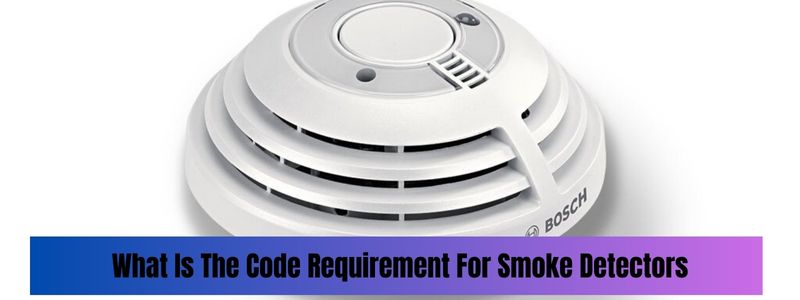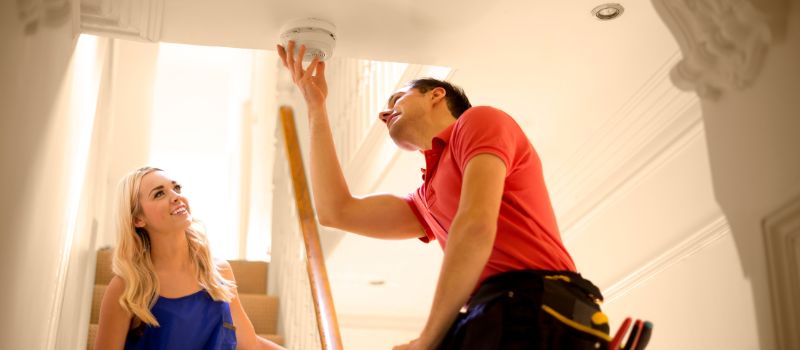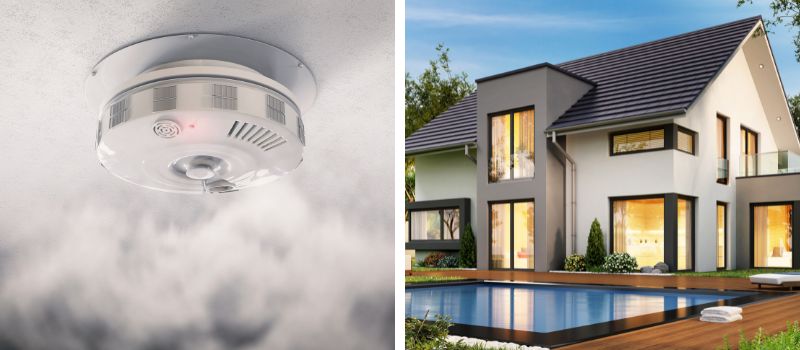Keeping your home or workplace safe is a top priority. While fire prevention practices are the first line of defense, heat detectors play a crucial role in alerting us to a potential catastrophe. Now you might be wondering, what is the maximum distance between heat detectors? And we’re here to answer just that.
Heat detectors are a bit like humans – they work best in pairs, or even in groups, but they need their personal space too. Too close, and they might feel crowded (and redundant), too far apart, and they might miss something important. Just right, and they’re a formidable team against fire hazards!
What Is The Maximum Distance Between Heat Detectors?
The maximum distance between heat detectors should not exceed 30 feet. That’s roughly the same as 10 arm-lengths of an average adult human or about 9.144 meters for the metric enthusiasts out there.
However, this spacing can vary based on several factors:
- Type of heat detector: Some detectors are more sensitive than others. Learn more about this in our article What Are The Two Types Of Heat Detectors?
- Size and shape of the room: Square rooms vs hallways, for instance, can require different spacing.
- Presence of obstacles: Walls, large furniture, or other physical barriers may necessitate additional detectors.
When it comes to heat detectors, you wouldn’t want to have them so far apart that they’re social distancing! The NFPA standard is a guideline, and it’s important to remember that additional coverage is always better than insufficient coverage.
Do note that heat detectors should not be a substitute for smoke detectors. They serve different purposes in fire safety. Our article Smoke Detectors vs Heat Detectors does a deep dive comparison if you’re interested.
How Does The Spacing Between Heat Detectors Impact Their Efficiency?
The spacing between heat detectors plays a crucial role in their efficiency. Think of it like this – you wouldn’t place all your chess pieces in one corner of the board, would you?
When properly spaced, heat detectors can:
- Ensure coverage: Adequate spacing means no part of the room is left unprotected.
- Prevent false alarms: Overlapping detectors can sometimes trigger false alarms.
- Facilitate quicker response: Detecting heat in the earliest stages of a fire can make a massive difference in response time.
Curious about the best places to install these lifesavers? Check out our guide on Where Should Heat Detector Be Located?
Comparing Heat Detectors and Smoke Detectors Coverage
Heat detectors and smoke detectors have different coverage areas. While the maximum distance between heat detectors is 30 feet, the coverage for smoke detectors is typically calculated based on square footage.
A common guideline for smoke detectors is one for every 500 square feet. But remember, this varies based on the layout and size of the rooms. To know more, read our article How Many Square Feet Can a Smoke Detector Cover?
Key Takeaways
- The maximum distance between heat detectors should ideally not exceed 30 feet.
- This spacing can vary based on the type of detector, size and shape of the room, and presence of obstacles.
- Proper spacing ensures effective coverage, prevents false alarms, and facilitates a quicker response to potential fire hazards.
- Heat detectors are not a substitute for smoke detectors; they complement each other in ensuring fire safety.
FAQs
Do heat detectors replace the need for smoke detectors?
No, heat detectors do not replace the need for smoke detectors. They serve different purposes in a fire safety system. Heat detectors are better suited for detecting slow, smoldering fires, while smoke detectors are more effective at detecting fast, flaming fires.
Can I space heat detectors further apart in a large room?
While it might be tempting to space heat detectors further apart in a large room, it’s not advisable. The maximum distance of 30 feet between detectors is recommended to ensure adequate coverage and quick detection of heat increases.
How does the spacing of heat detectors affect their efficiency?
Proper spacing of heat detectors ensures effective coverage, prevents false alarms, and facilitates a quicker response to potential fire hazards. Spacing them too far apart may result in delayed detection of a fire.
Where should I install heat detectors?
Heat detectors should ideally be installed in areas prone to rapid temperature increases, like kitchens, garages, and attics.
And there you have it, folks! Armed with this knowledge, you’re all set to tackle your heat detector placement like a pro. Just remember the golden rule – when in doubt, more is better. After all, the stakes are too high to play a game of ‘hot potato’ with fire safety. Stay safe, and keep the heat detectors at an arm’s (or ten) length!

Edward’s expertise in smoke detectors is particularly noteworthy. He has conducted extensive research on the latest advancements in smoke detector technology and has worked closely with manufacturers to develop cutting-edge products that can detect fires more accurately and quickly.




